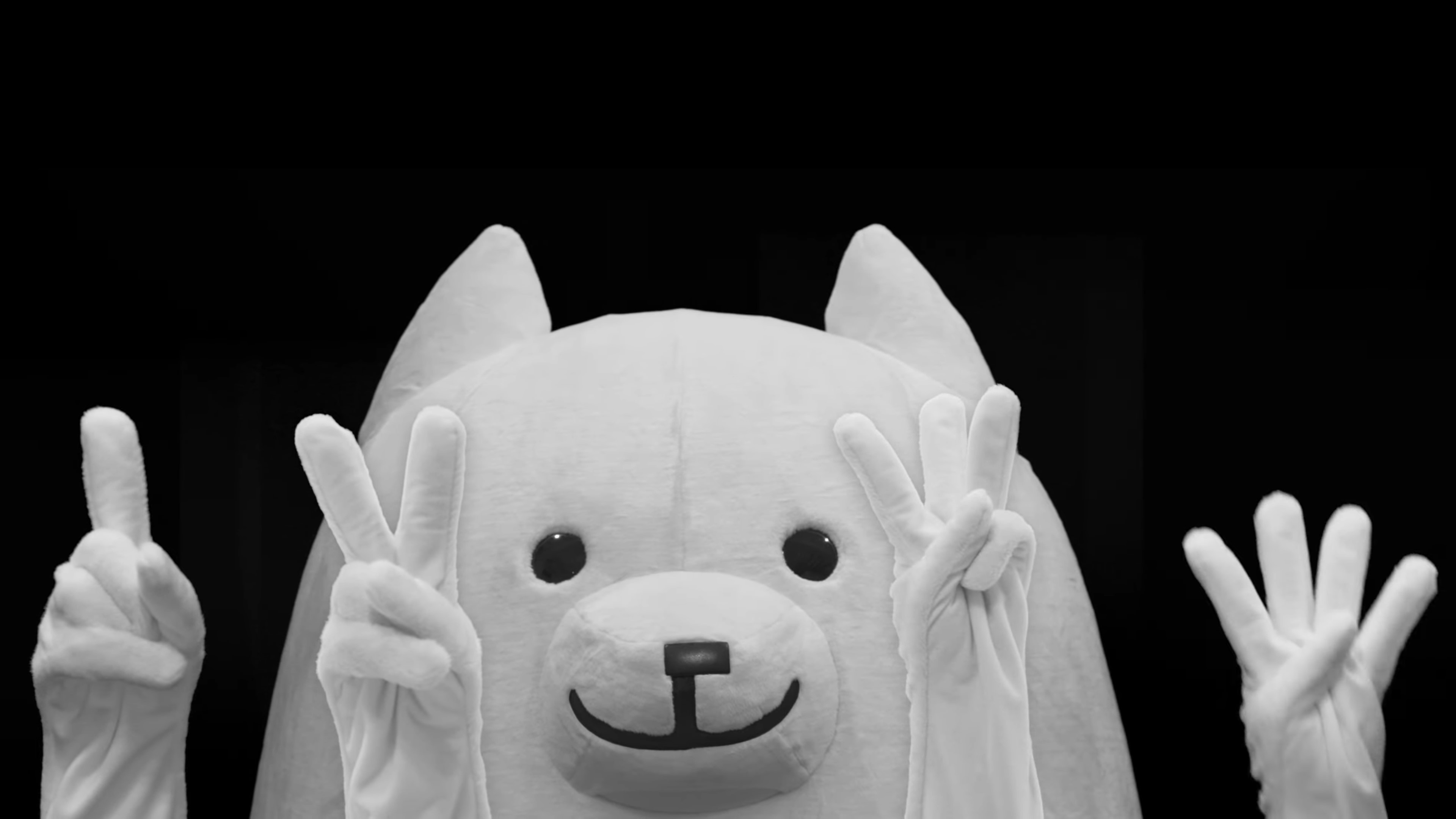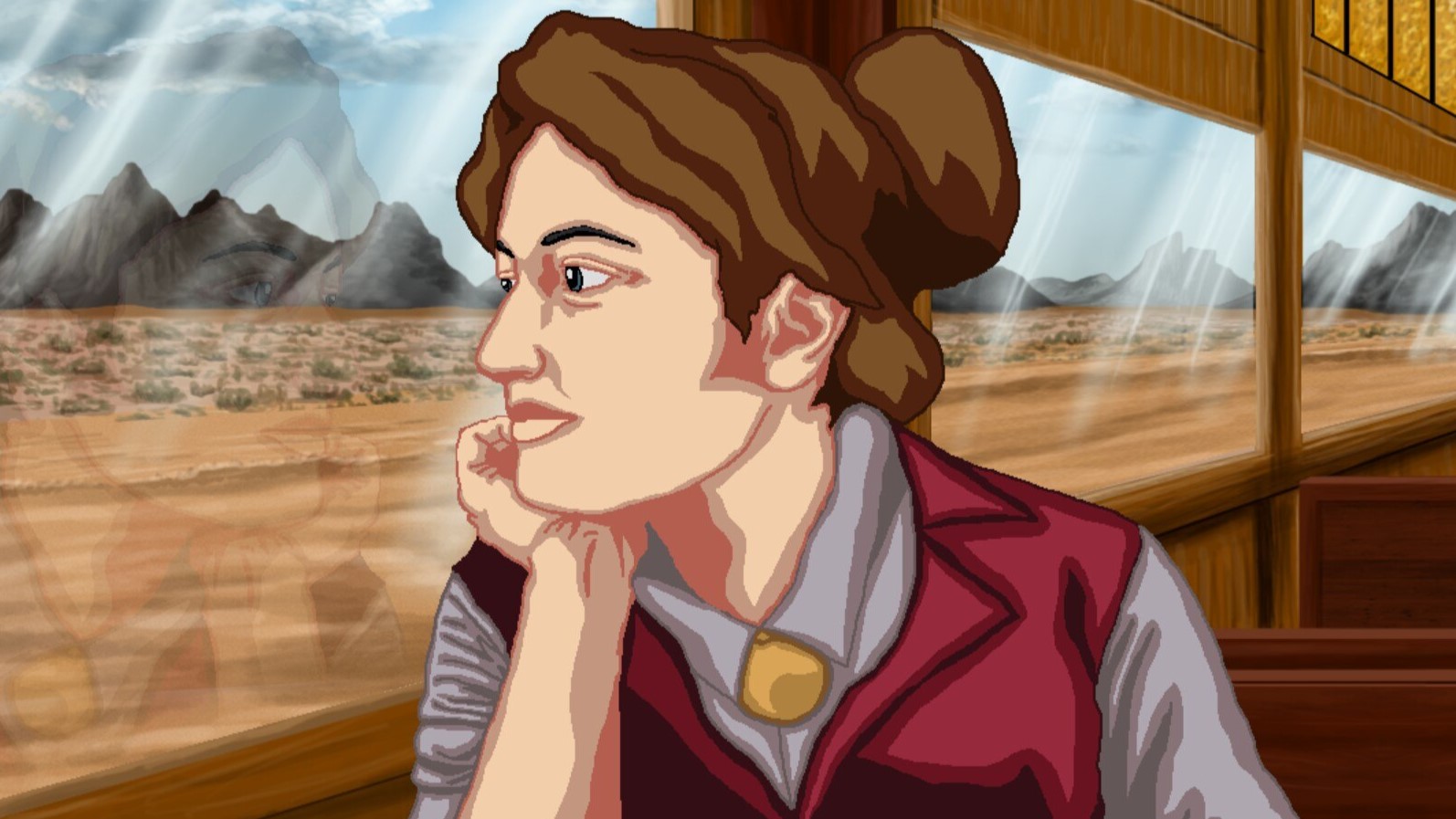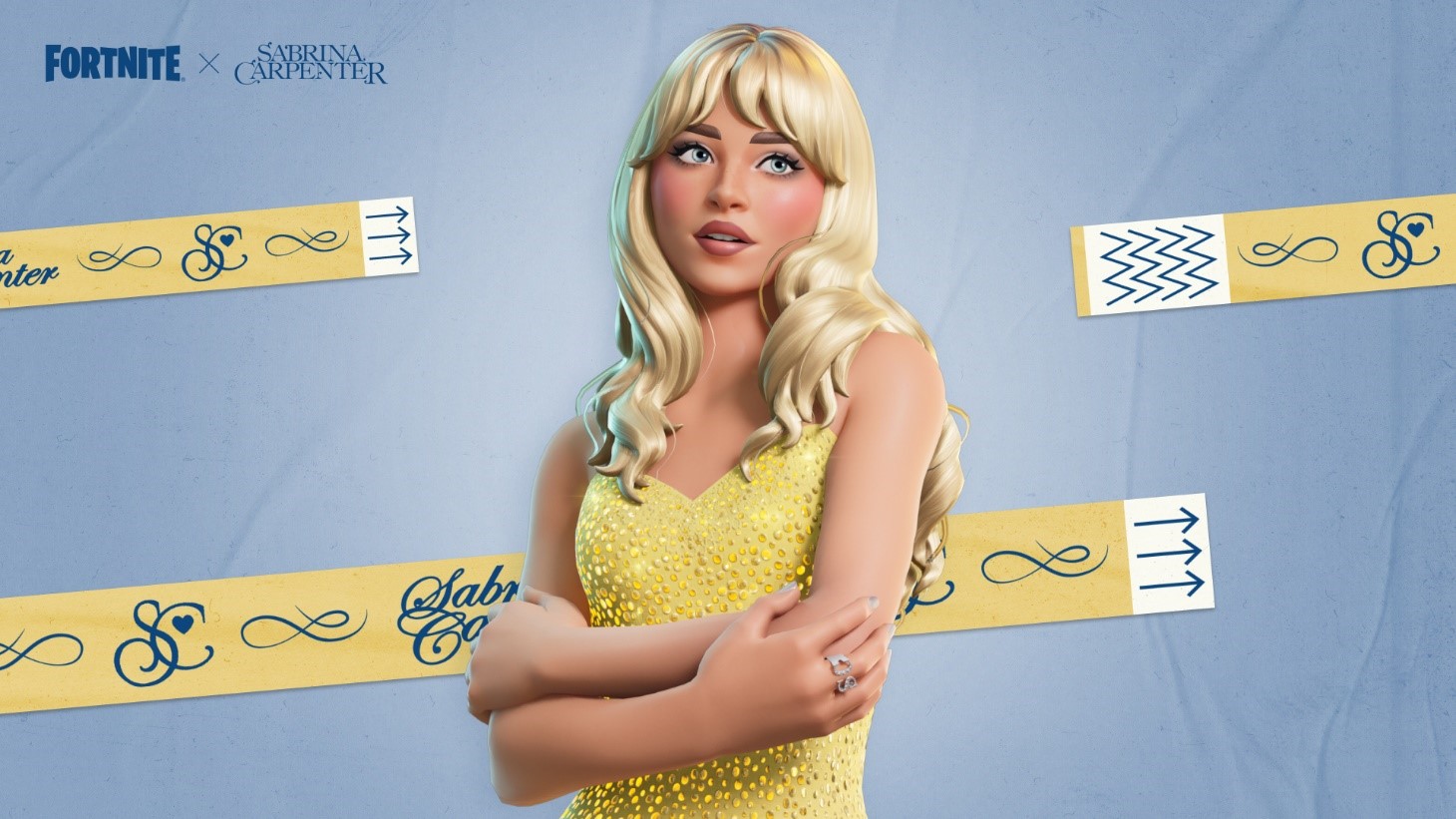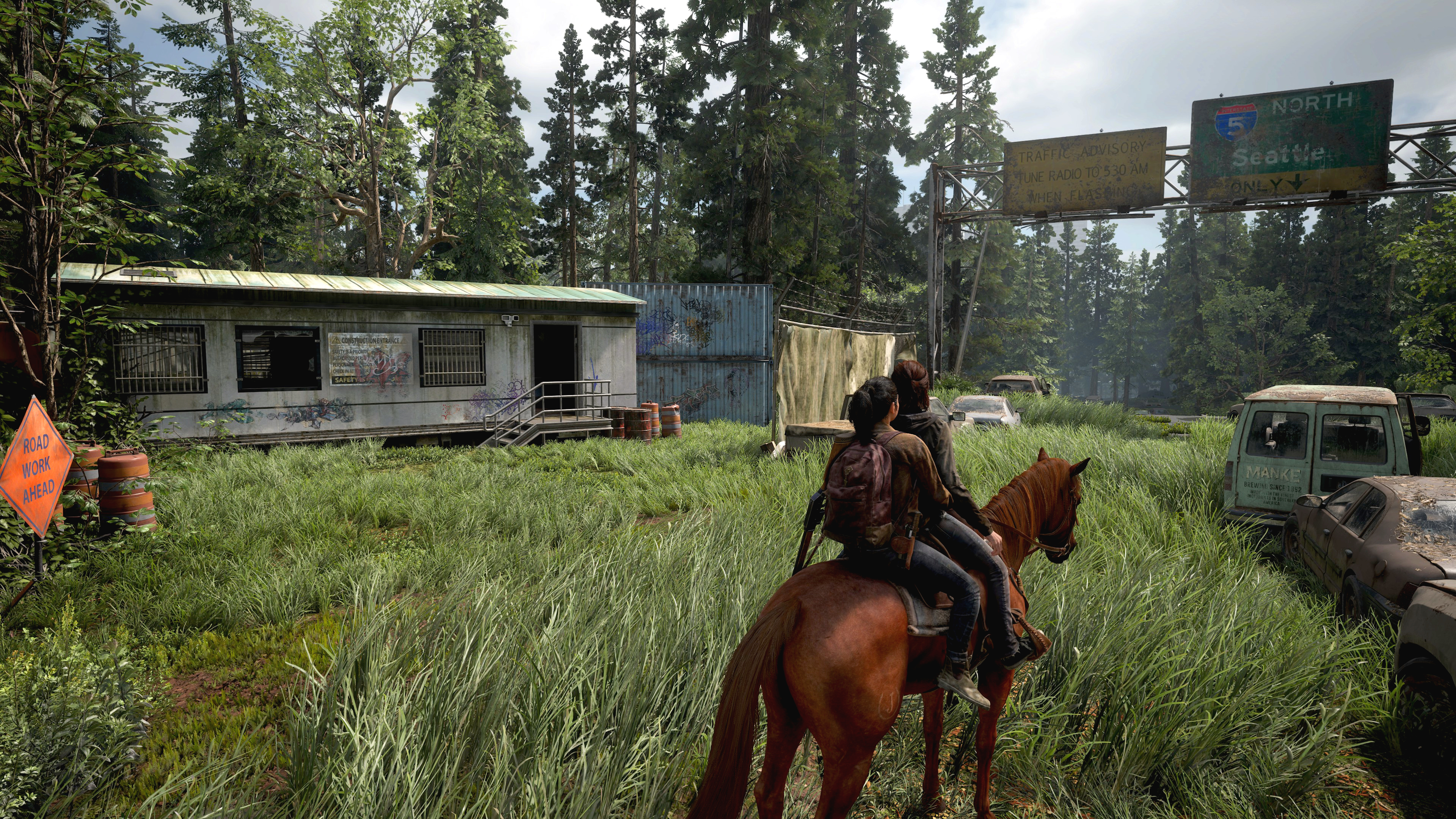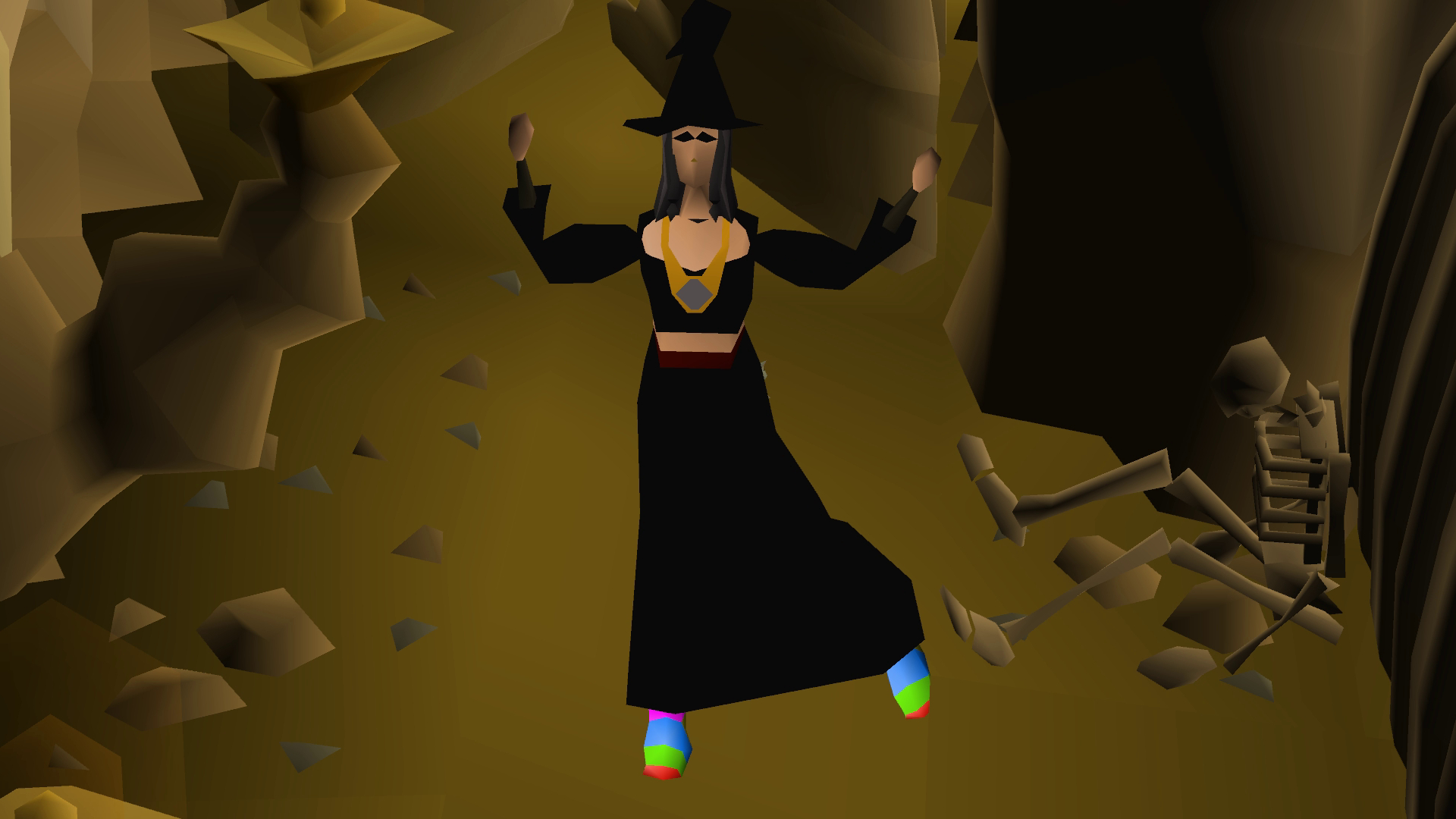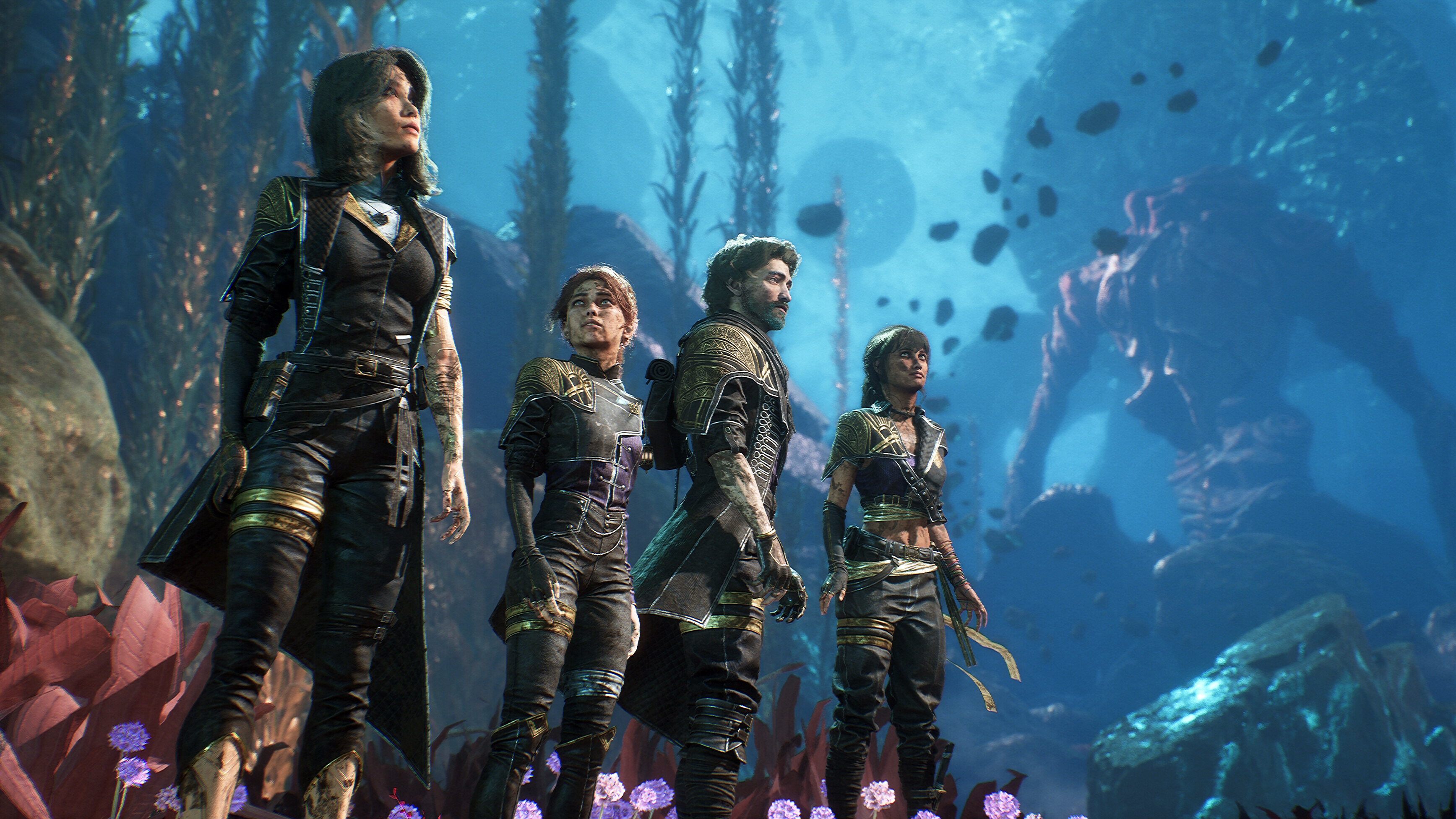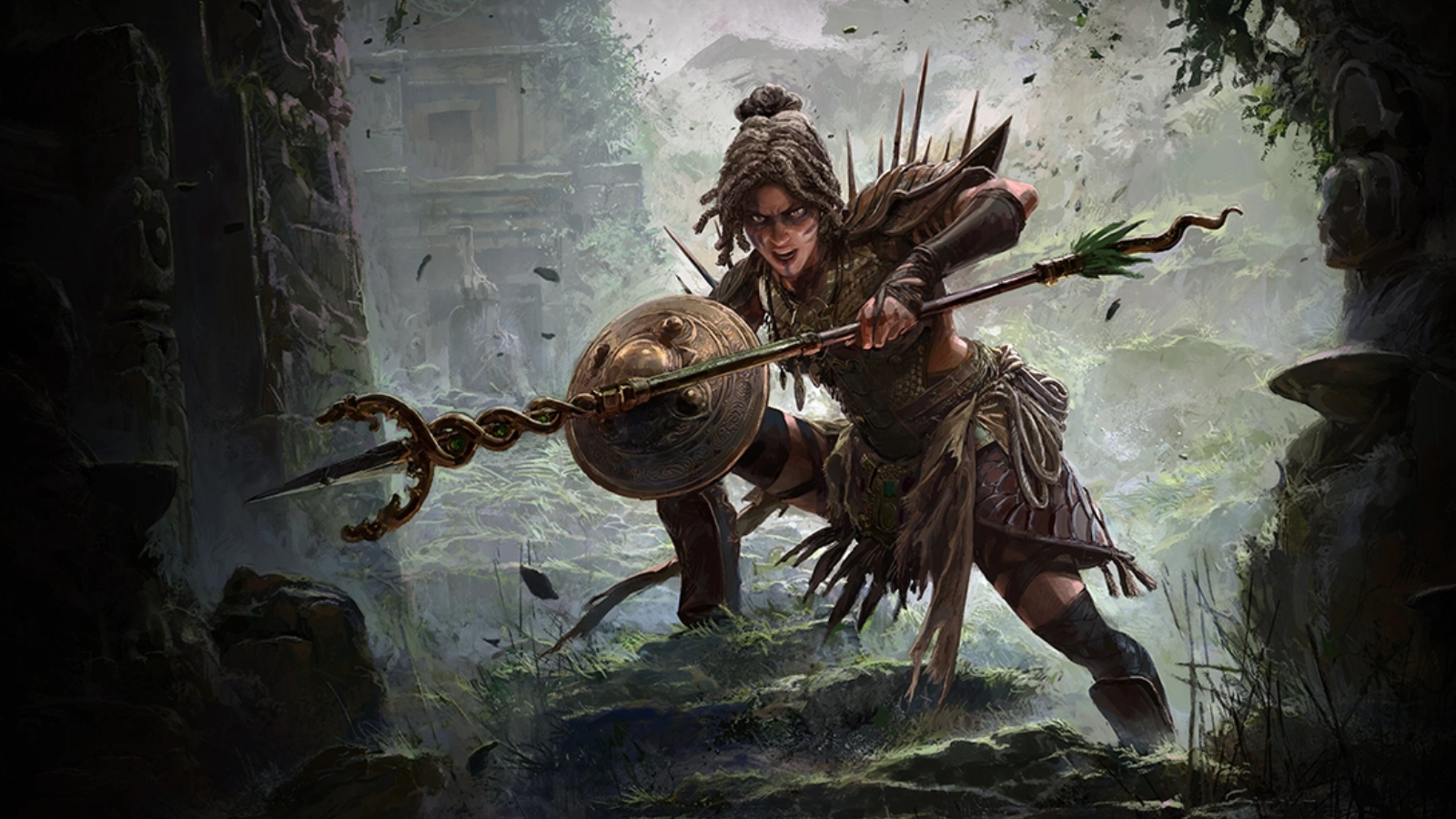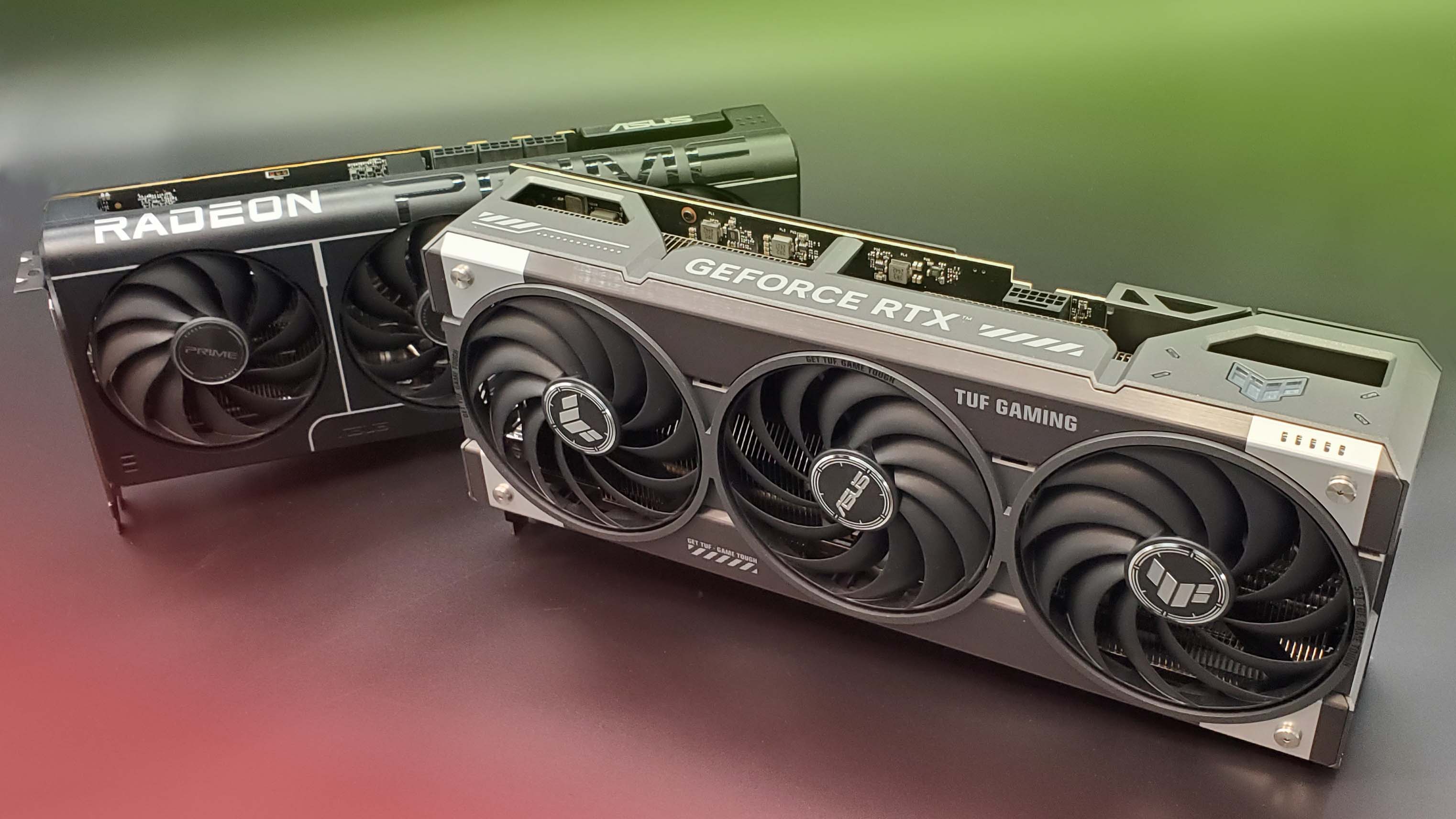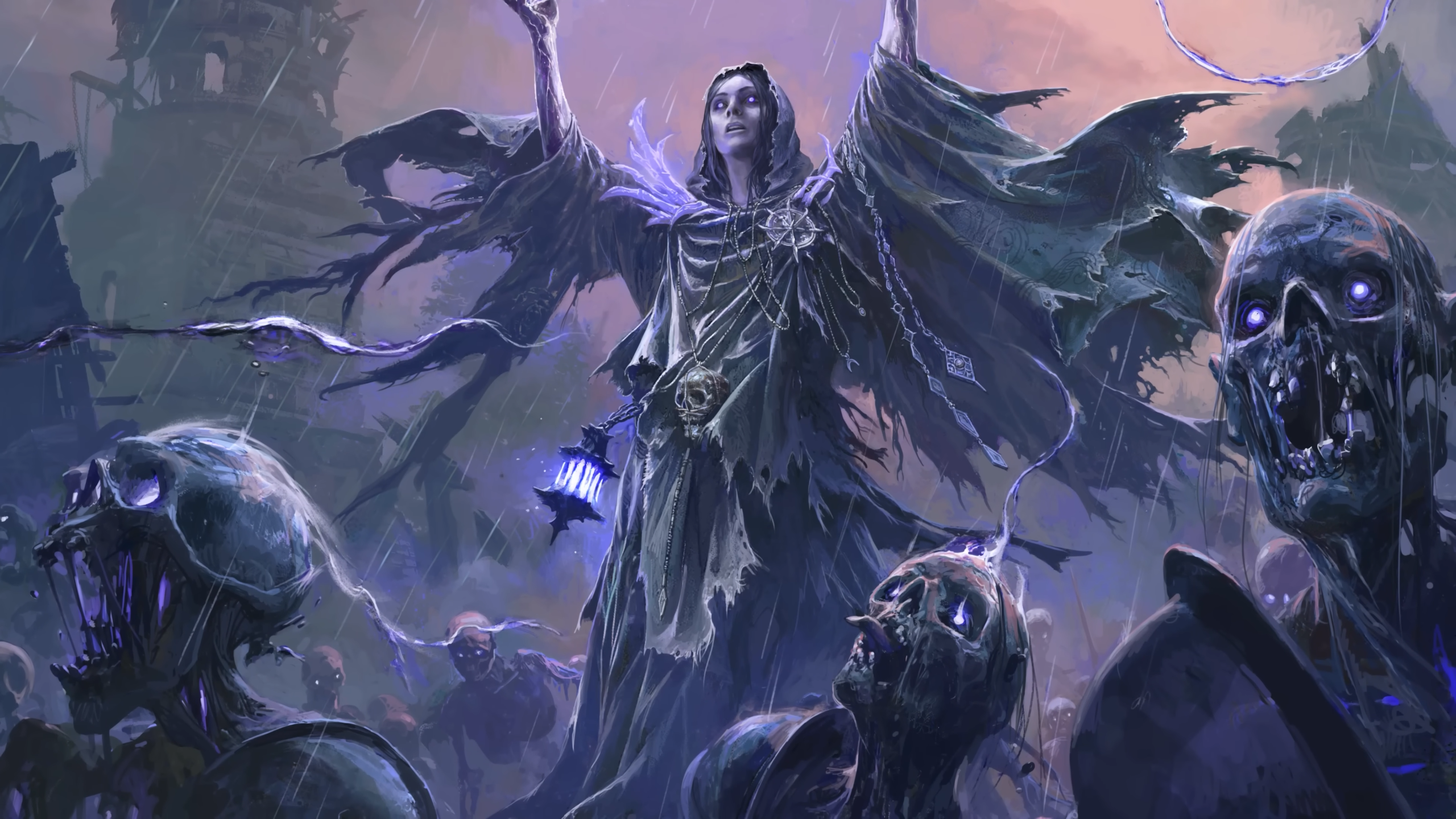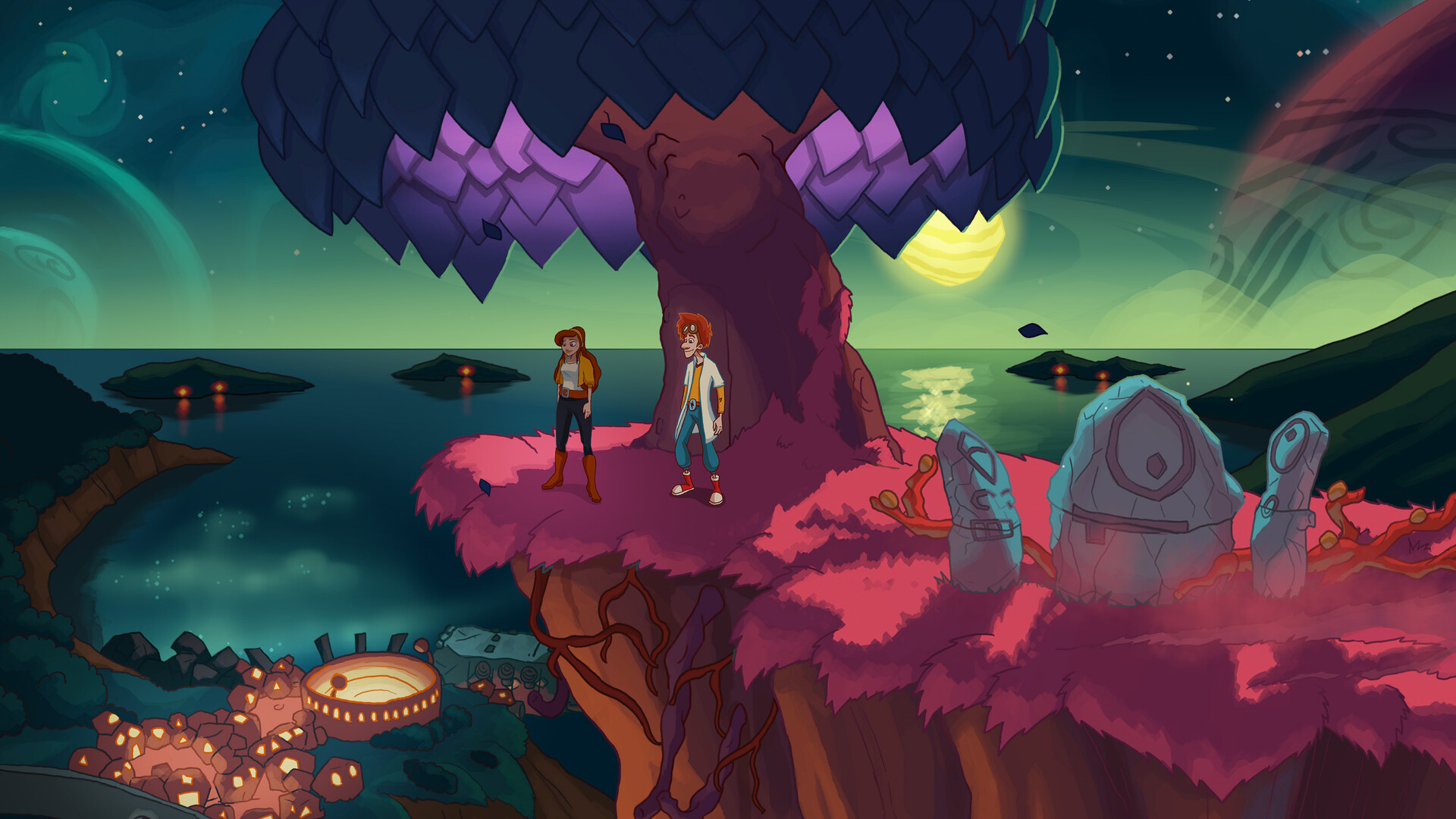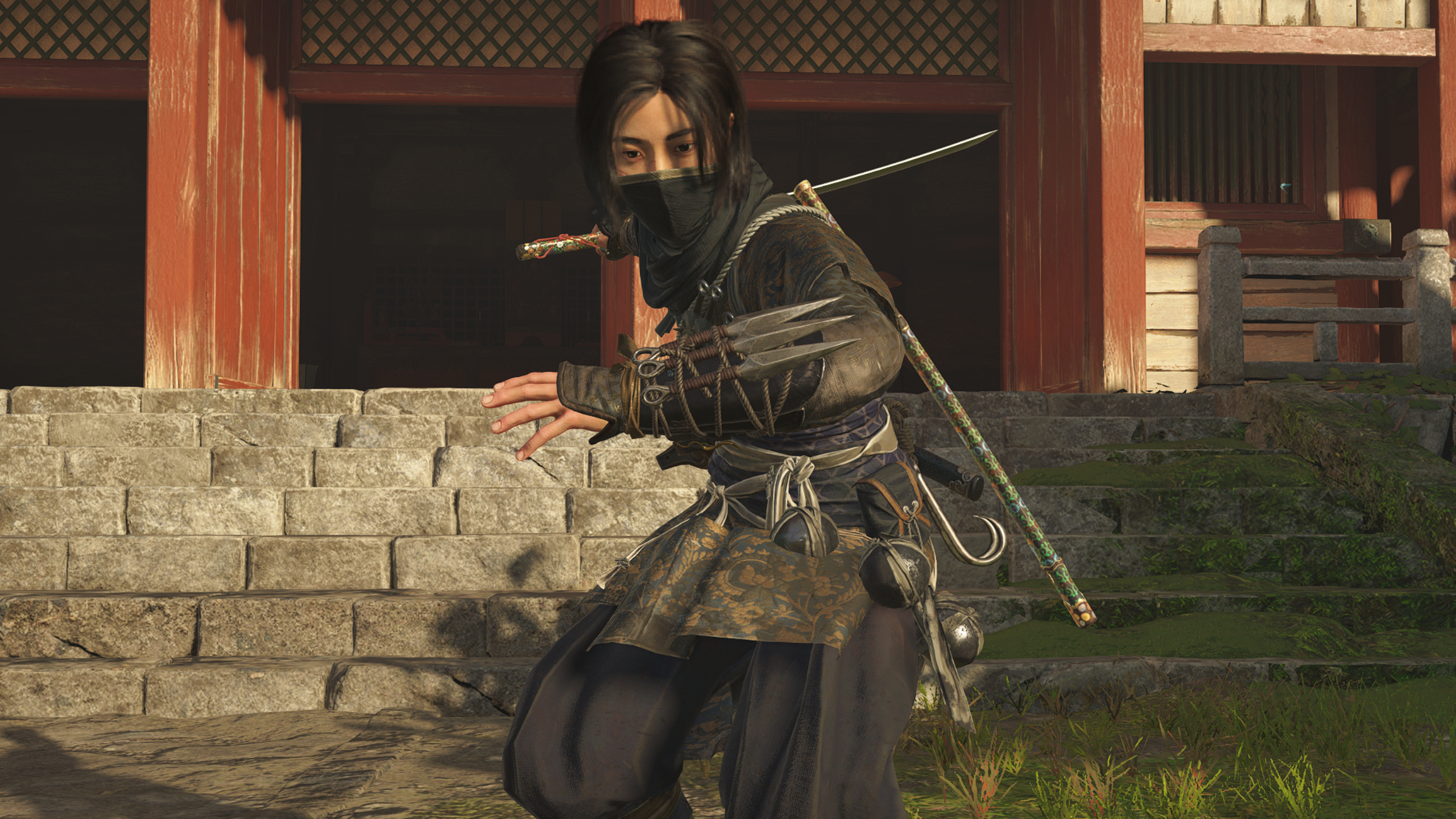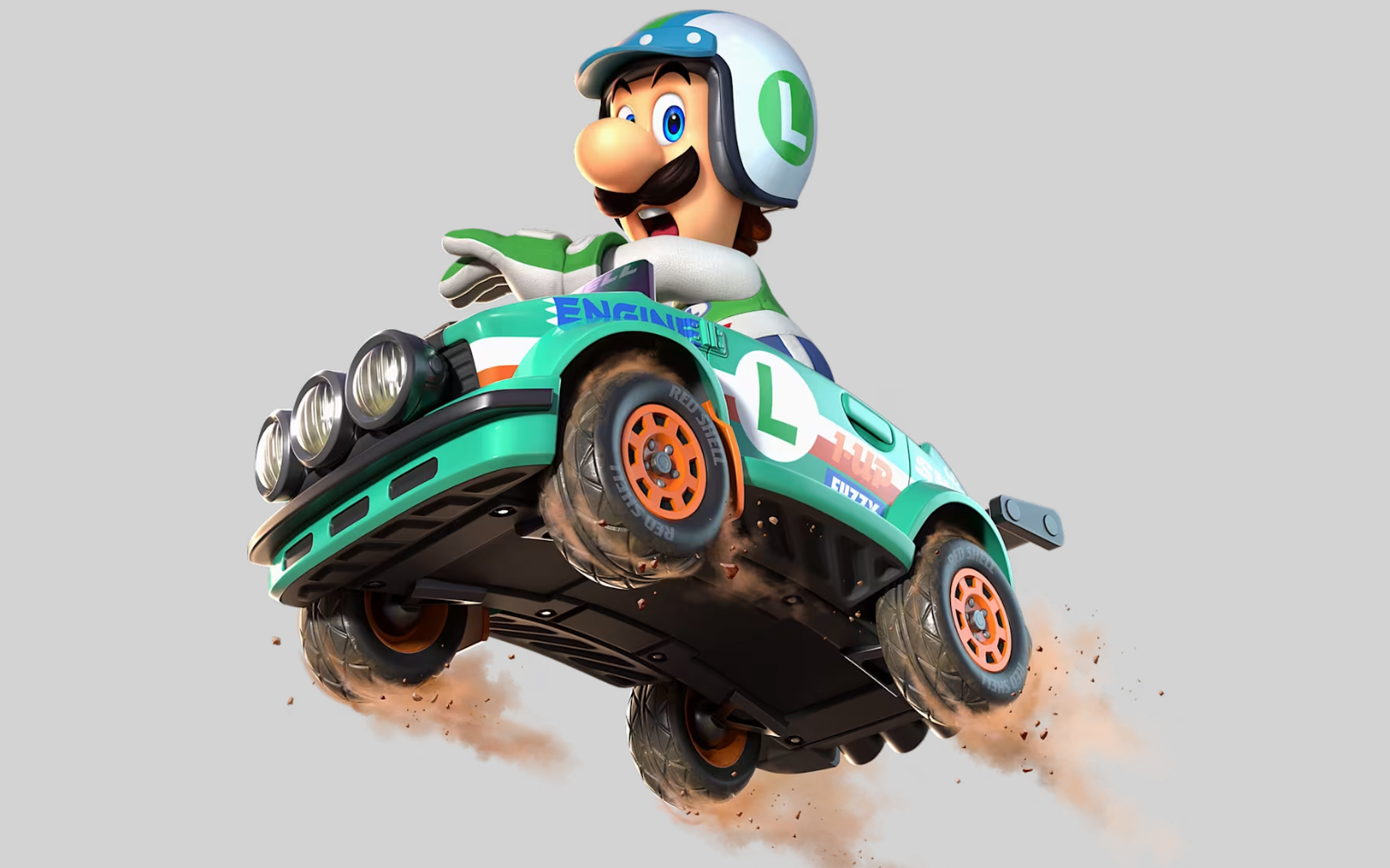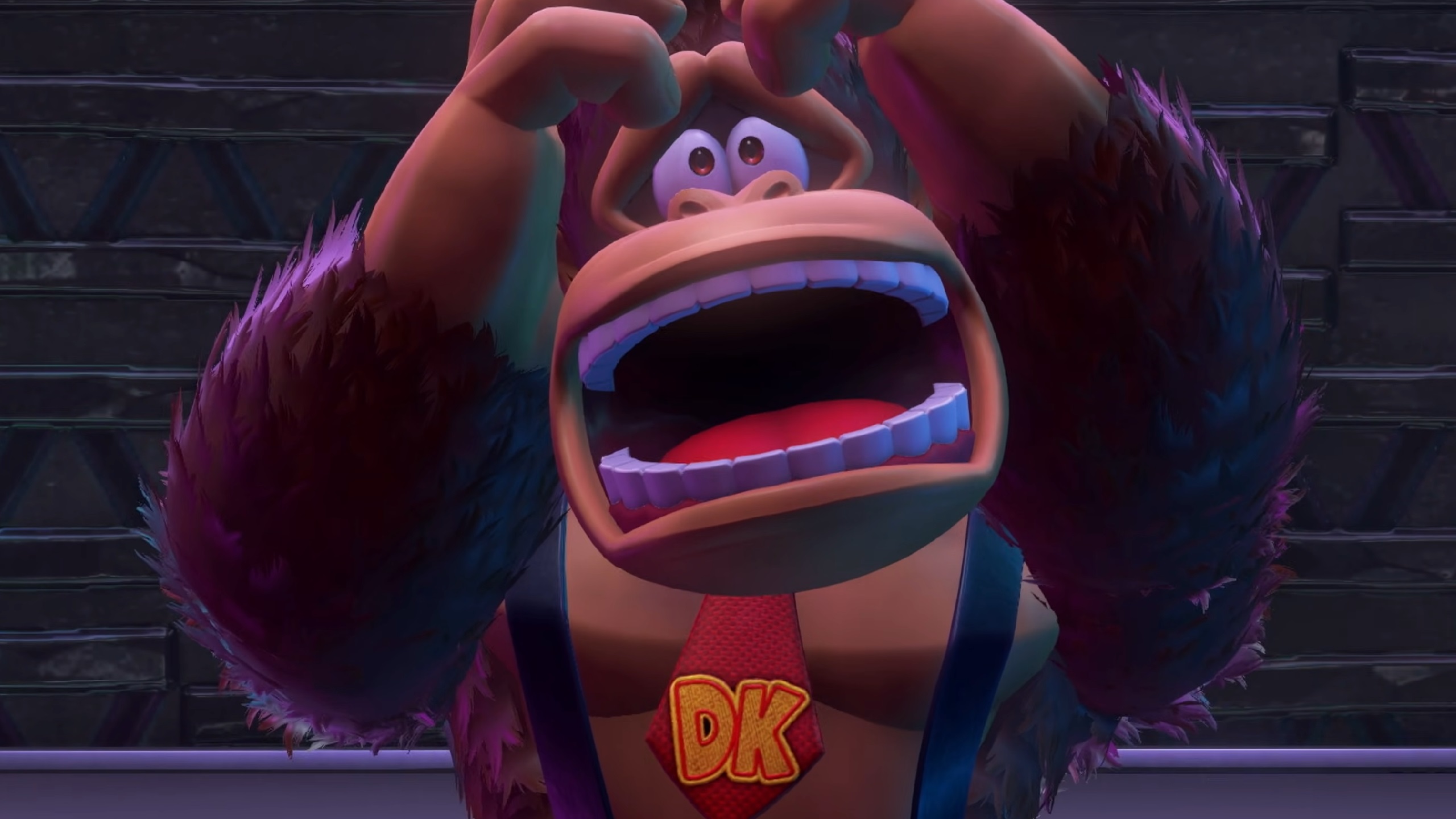How MachineGames created Wolfenstein's new order
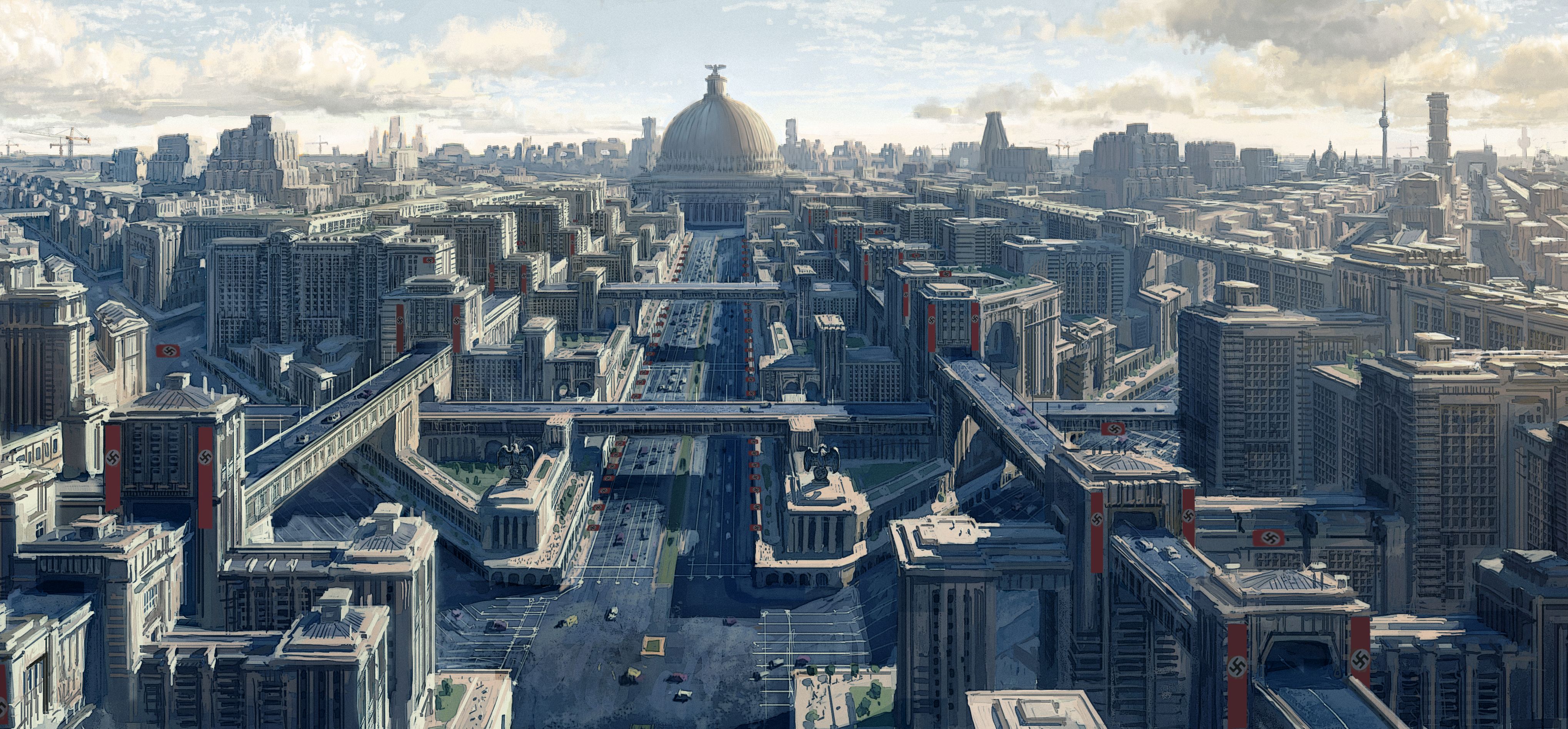
"This ain’t war, but the breaking of seals. The undoing of life itself.” BJ Blazkowicz mutters these words – or thinks them, it’s never quite clear – while clearing out a column of Nazi footsoldiers in the trenches outside General Deathshead’s Baltic compound.
The first level of Wolfenstein: The New Order is the only part of the game that takes place during the Second World War. It’s both a sendoff to the old Wolfenstein and the introduction of the new, stranding the player on a beachhead and forcing them to fight past Nazi robodogs, electrocharged kommando squads, and a building-sized walking Tesla coil called ‘The Stomper’.
Beyond the beach is the compound itself, a gothic edifice that riffs on the mossy Teutonic fortresses beloved of the previous games. It’s a return to Castle Wolfenstein in all but name, a swansong for the series’ familiar milieu: a big man in a tan jacket gunning down fascists with a Thompson in hallways full of suits of armour and fading portraits of Nazi field marshals. After this there’s a run-in with an old villain, an explosion, and a 14-year coma. After this the game concerns an insurgency operating out of alt-’60s Berlin, becoming a game where a big man in a brown jacket sprays down Nazis with an upgradable lasergun in brutalist concrete megastructures and also on the moon.
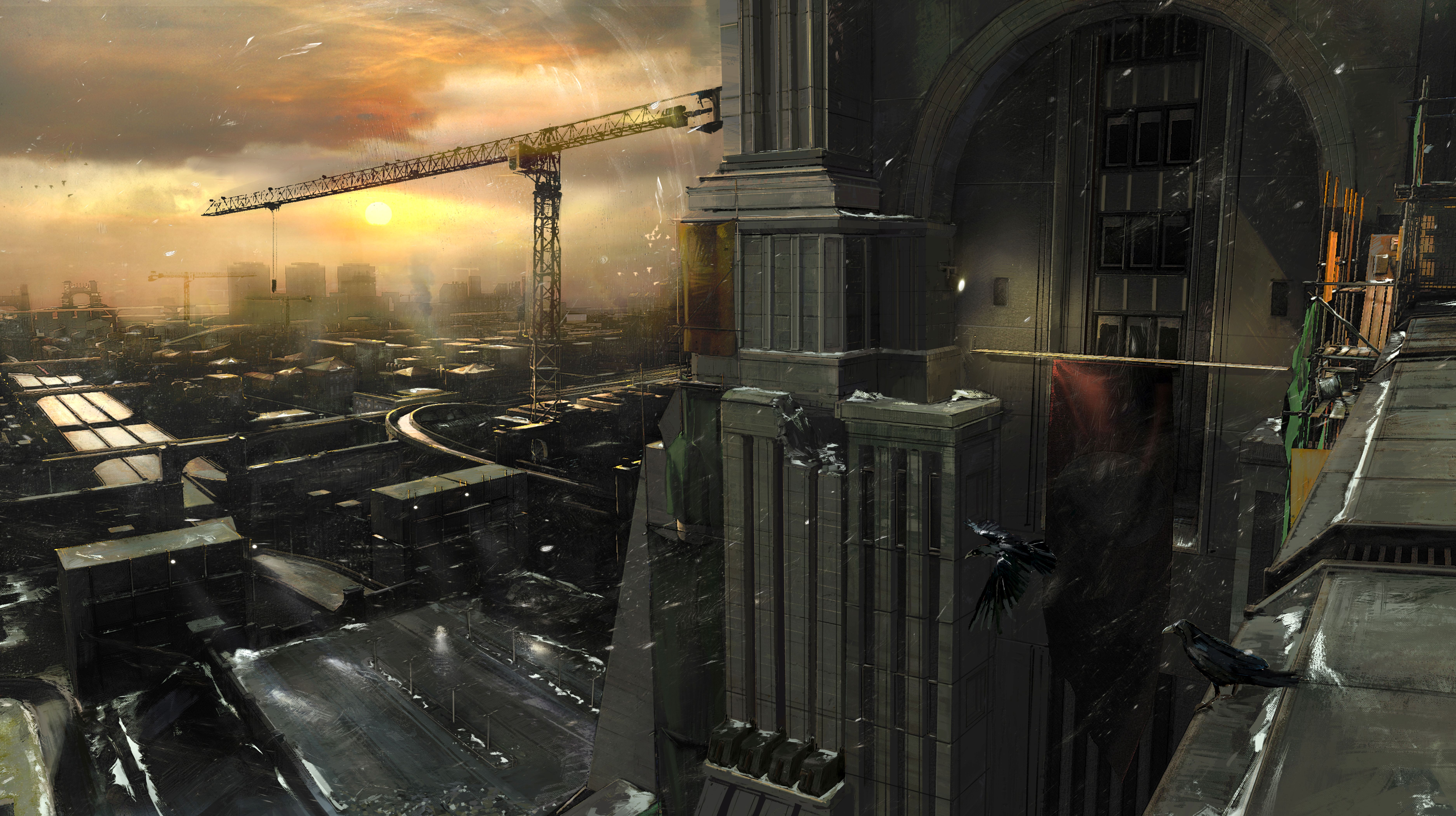
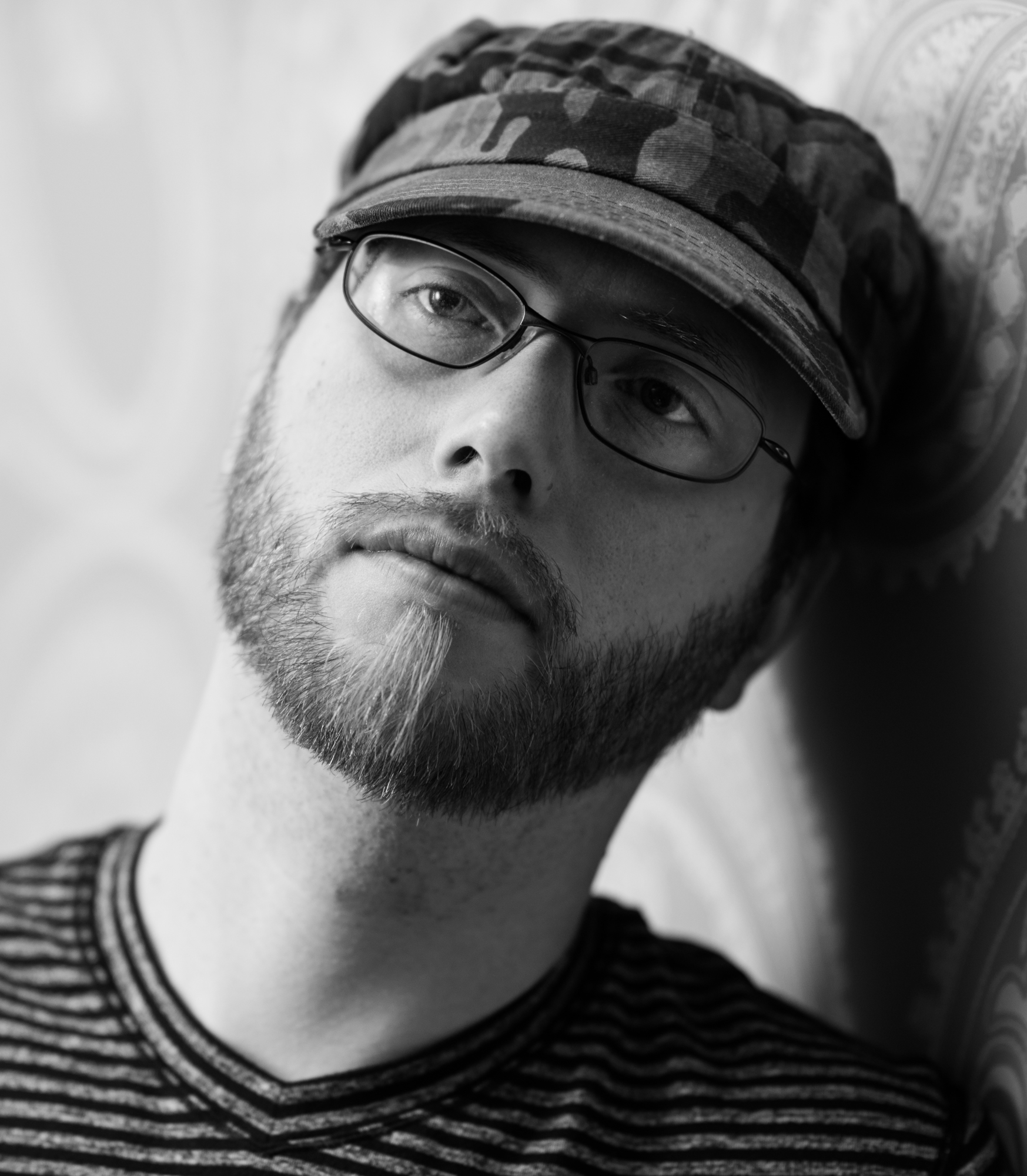
Job title: Creative director, MachineGames
Credits: The Chronicles of Riddick, The Darkness, Wolfenstein: The New Order
Bio: Formerly of Riddick and Darkness dev Starbreeze, Matthies co-founded MachineGames in 2009.
“This ain’t war, but the breaking of seals,” BJ thinks, the latest in a series of personal observations that touch upon subjects as varied as the familial bond between doomed soldiers, the family he will never have, the barbecue he will never have, and the revenge he intends to exact, in varying proportions, for all of the above. It’s an end and also an introduction. BJ is no longer the matinée hero he was in Raven’s 2009’s Wolfenstein. He doesn’t crack wise. He’s a font of earthy and sometimes even poetic musings on the nature of life and war who also admits his fondness for “shootin’, stabbin’, stranglin’ Nazis.” He’s steeped in religious mythology to the extent that he’ll say things like “breaking of seals”, while remaining the good ol’ boy who just wants some barbecue.
To put a finer point on it, BJ Blazkowicz is, like the world and the game he occupies, absurd. He’s a likeable column of meat and nonsense, the kind of man who needs to find an apron and proper eye protection before he even considers threatening a Nazi officer with a chainsaw.
“We love the juxtaposition of the grandiose and over the top with intimate moments of domestic reality,” MachineGames’ creative director Jens Matthies tells me. “We establish this really early on, when we jump the shark in the first couple of minutes of the game.”
We love the juxtaposition of the grandiose and over the top with intimate moments of domestic reality.
Talking to Matthies, it’s clear that a lot of consideration was involved in building the gameworld this way. Its discordance isn’t an accident. That’s something that doesn’t always truck with critics so used to dealing with the unconscious absurdities of videogame plots, as MachineGames have experienced in the months since The New Order’s release.
The biggest gaming news, reviews and hardware deals
Keep up to date with the most important stories and the best deals, as picked by the PC Gamer team.
“On the reviewers’ side it feels like there’s a pretty clear divide among people that get it and people that don’t,” Matthies says. “They can’t approach the game for what it is, but what they think it is.”
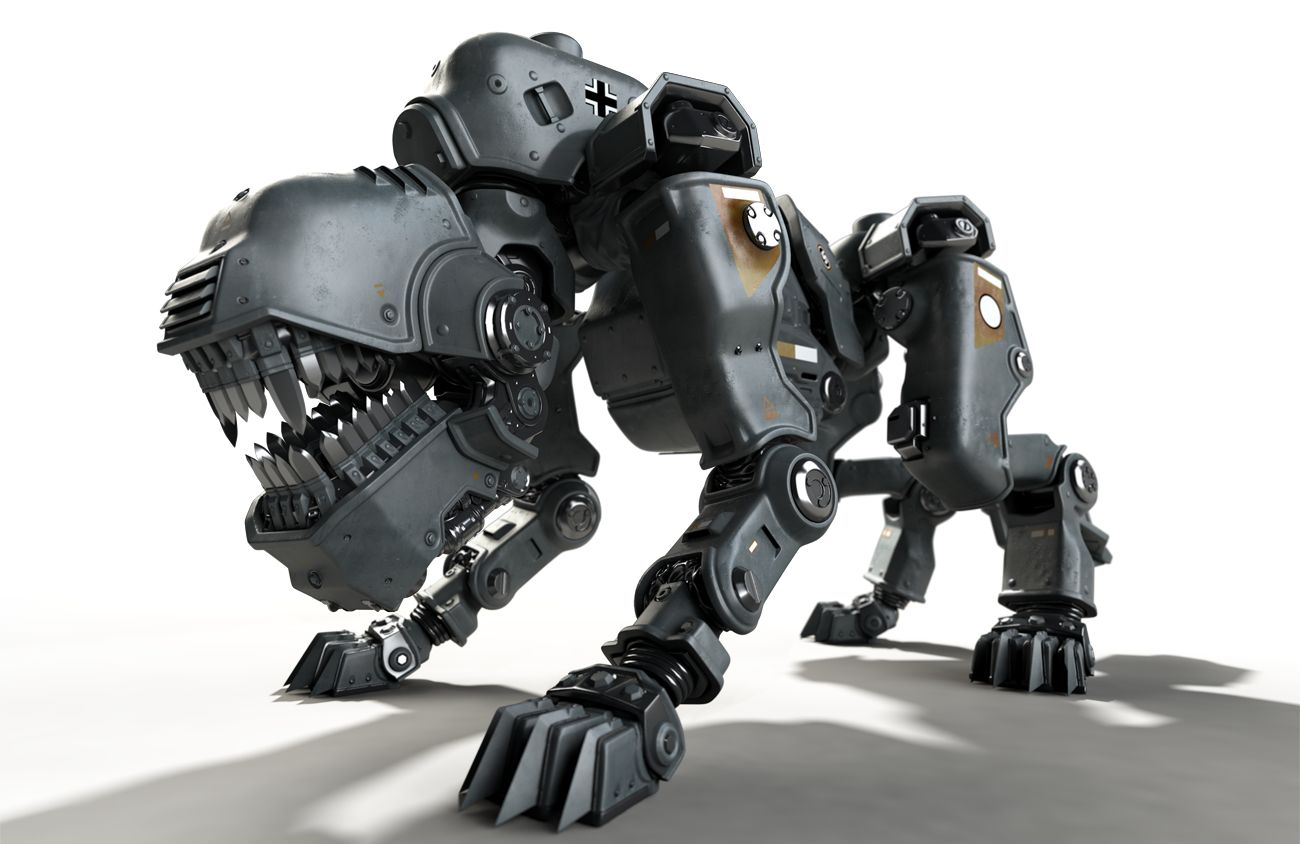
Matthies is an action cinema buff and points to the first generation of id Software shooters – including Wolfenstein 3D – as the reason he’s in the games industry. Wolfenstein: The New Order expresses the urge to bring these things together in a conscious and critical way – to celebrate, rather than moderate, each of their excesses. This meant excising outright the 2009 interpretation of BJ Blazkowicz, who Matthies describes as “a Nathan Drake-type of character.”
“We looked to Wolfenstein 3D because it’s the source,” he says. “It’s also the freest expression of Wolfenstein because it was just these kids making a game in a basement who weren’t hampered by any kind of pretension about true art. It was just the shit they thought was cool, and there’s power in that mindset.”
When I reviewed The New Order I wrote that it was beautifully designed, but not the game you’d bring up if you wanted to have a discussion about the nature of games as art. Looking back, that’s not entirely right. It’s an example of games as naive art, rooted in the things that defined the medium’s adolescence: guns, bigger guns, big fucking guns, demons and Nazis (these things are more or less gaming’s equivalent to a picture of some ferns or a nice lion.)
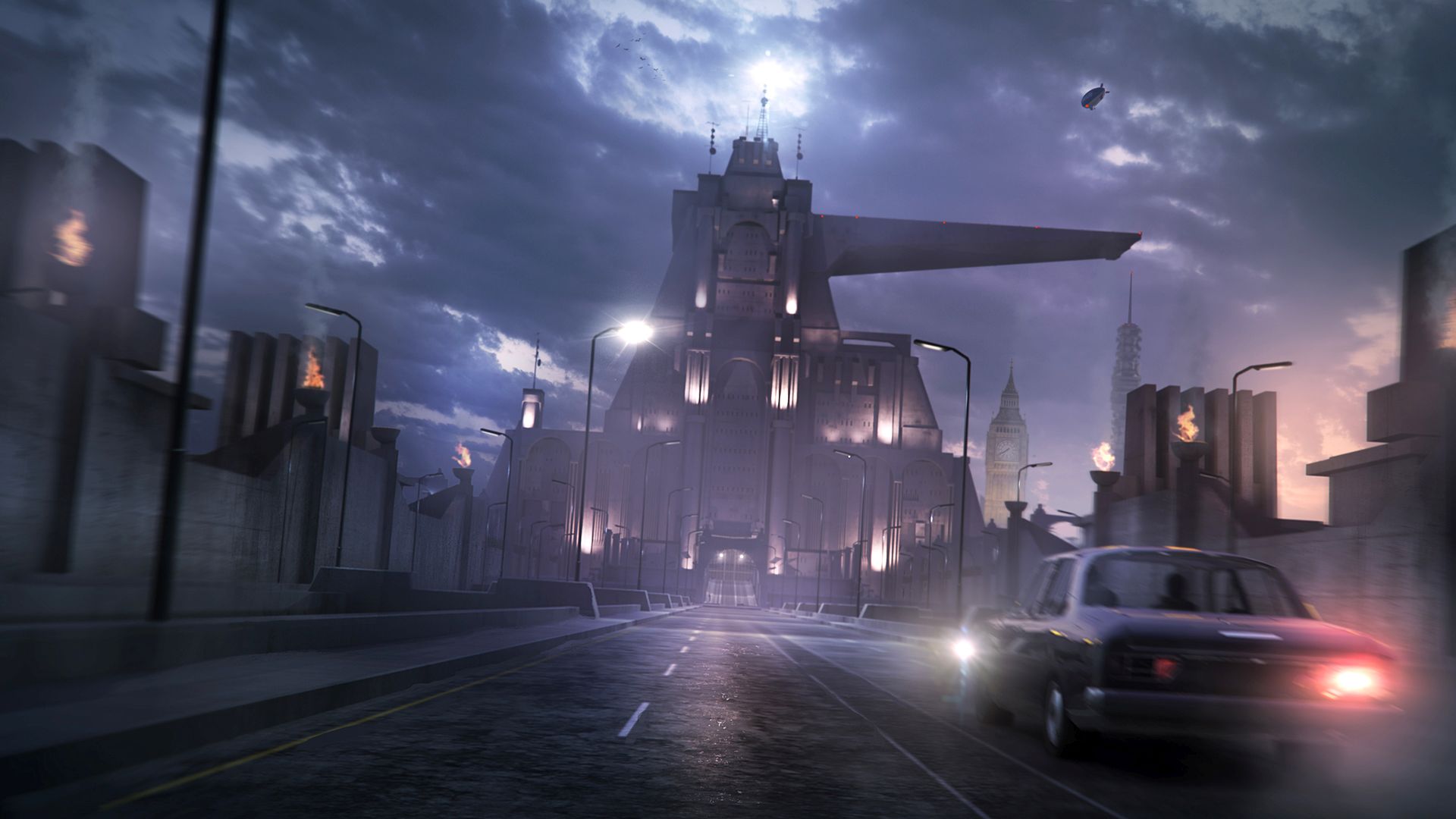
Wolfenstein isn’t entirely naive, however. Something that struck me as I played it was that its depiction of a future Nazi regime specifically derives from Nazi ideology. It’s not just a case of having everybody wear hats with skulls on them. You couldn’t swap Nazis for aliens or robots as you might be able to do in another kind of shooter. Despite the absurd treatment, the game touches on enough specific points – from Aryan dogma to concentration camps – to lend it a sense of hyperreal historical commentary.
“When you’re making a Wolfenstein game you are dealing with Nazis,” Matthies says. “That is a fundamental fact that nothing is ever going to change. The question then becomes ‘how do you deal with the Nazis in the most powerful way possible?’ Even though we paint this game on a larger than life canvas, the Nazis in it are propelled by Nazi ideology. We don’t want to dial that down – that would feel like sugarcoating what that ideology was actually about.”
It’s possible to take a moral line against the game at this point, a line similar to the objections that were raised against Tarantino’s Inglorious Basterds, a film that shares a lot of sensibilities with The New Order. The argument would be that Nazi atrocity is not a resource to draw material for violent entertainment from. Matthies is deeply opposed to creative regulation of this kind on principle, but there is also sense to all this senseless violence.
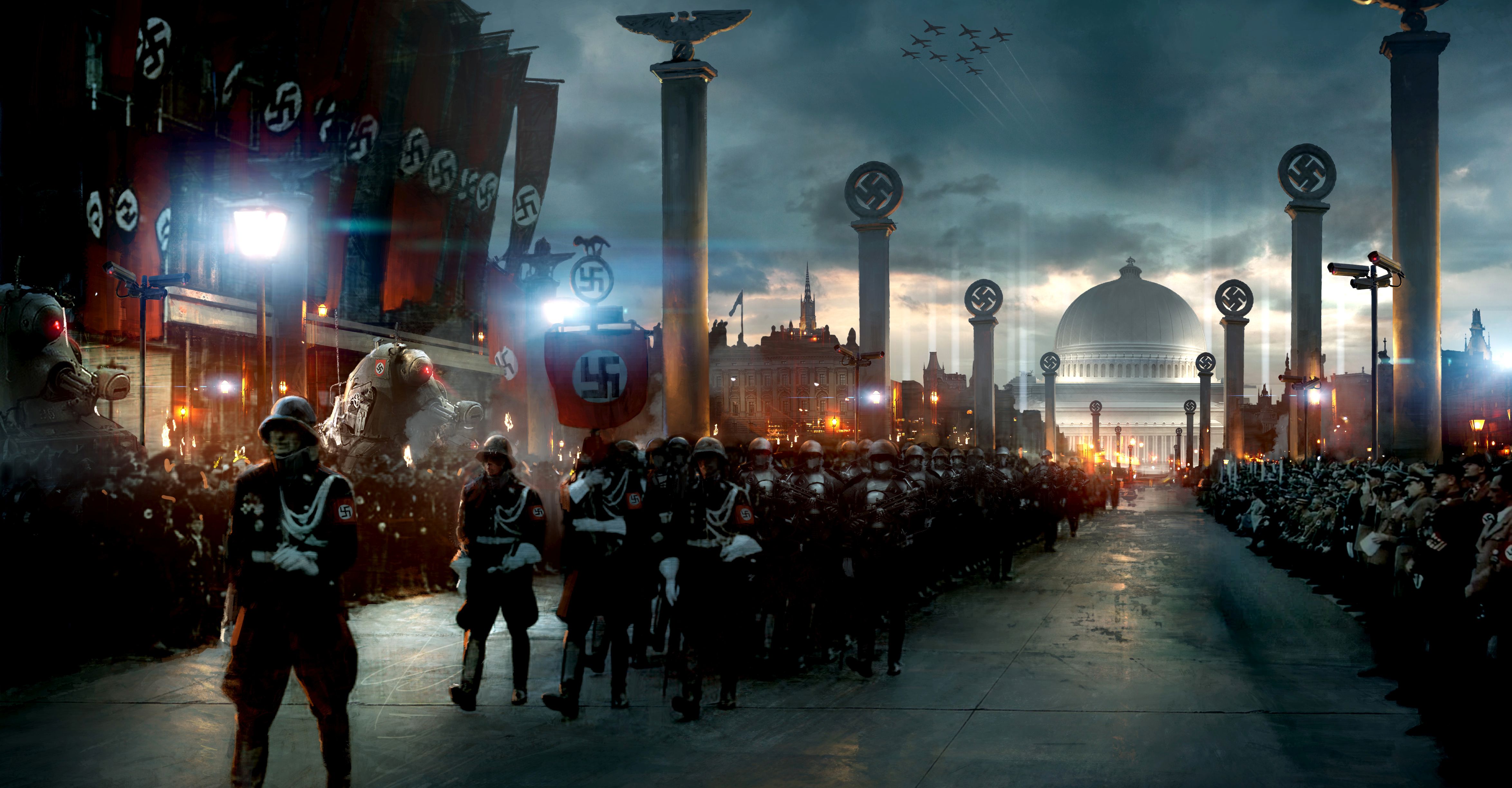
The New Order’s absurd tonal juxtapositions make it a very funny game in addition to being a very violent one, and both of those factors have a role to play in creating a sense of historical catharsis. By placing Nazi ideology at the centre of this ridiculous game its own ridiculousness is exposed: the trappings of action cinema are used to counteract the seriousness with which any fascist ideology demands to be regarded. Just as comedy has done many times before – Chaplin’s The Dictator, The Producers – violence makes Nazism silly. When BJ blasts a Nazi supersoldier’s arms off with a pair of huge shotguns, he is figuratively and literally disarming him.
Matthies points to the Nazi tendency to over-design as the source for much of this humour. Wolfenstein: The New Order’s silliest extremes are justified because they carry Nazi ideology further up an absurdity curve that the ideology was already on.
The sequence is about making the player feel powerless in the face of arbitrary and cruel ideology
There’s a moment early in the game when BJ and his ally, Anya, have reached the night train to Berlin. While he’s getting coffee for both of them, BJ is ordered by Frau Engel, a Nazi officer, to sit with her and her lover, Bubi. Laying a gun on the table, she gives BJ a selection of photographs to choose between as a test of his ‘purity’. If the player goes for the gun instead, he dies, mown down by a nearby robo-guard.
The sequence is about making the player feel powerless in the face of arbitrary and cruel ideology, and the way it achieves this is by replacing the thing that would normally be used to give BJ agency – his gun – with two wobbly cups of coffee.
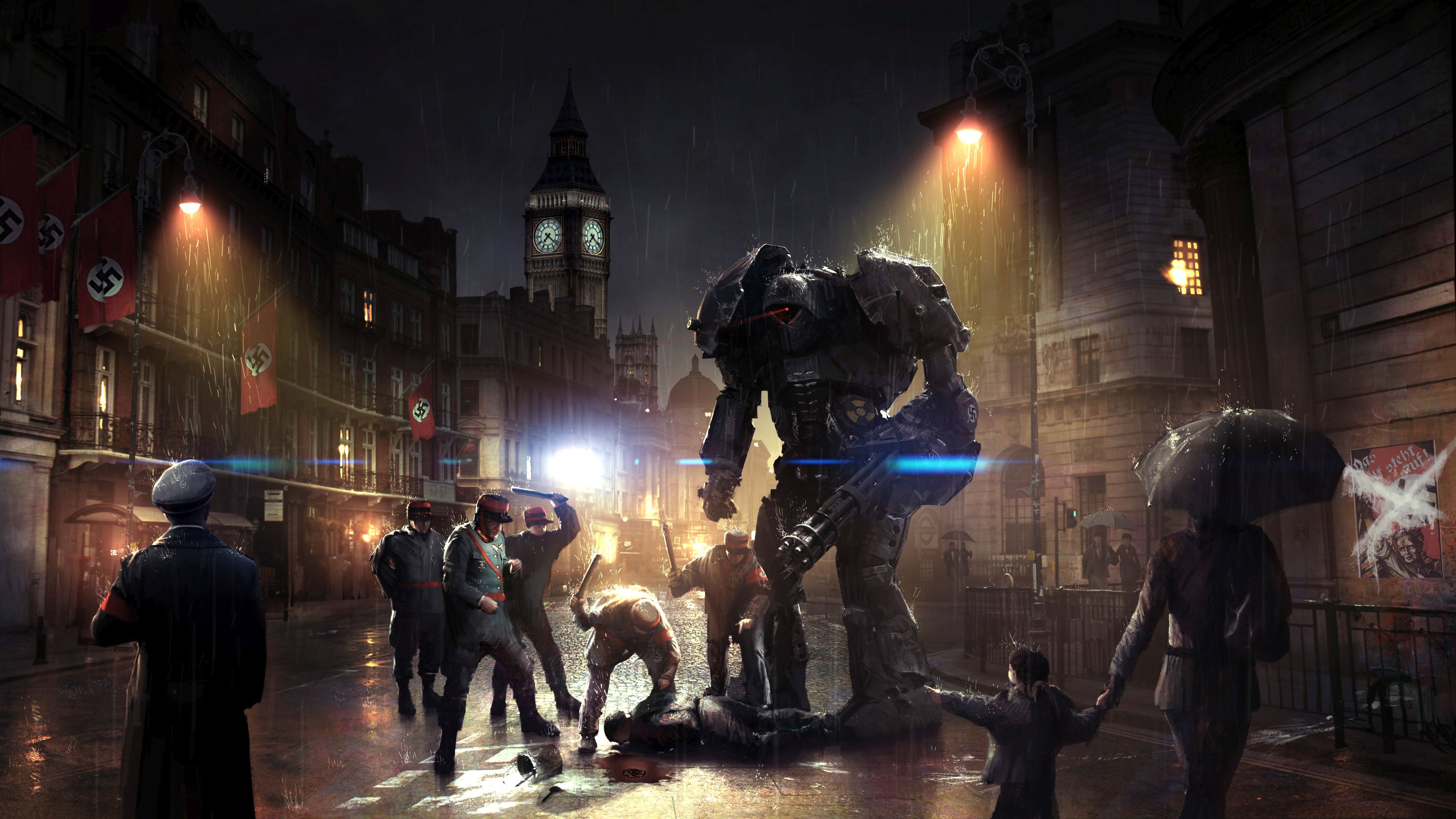
“You’re out there on the battlefield shooting Nazis left and right,” says Matthies, “but sometimes you’ve got to carry a fucking tray with coffee on it. I love that. I think that anchors it in reality.”
The sequence is Wolfenstein: The New Order in microcosm: interesting but deeply silly, grounded but absurd, intricately constructed but tonally all over the place. It’s easy to rush through the game’s story without appreciating the energy and thought that goes into creating a moment like this, to fail to note the little wink the game does when you’re shown some coffee, a reclining Nazi officer, and a lasertoting guard robot so large it wouldn’t fit through any of the doors on the train. It’s daft, violent, and oddly personable.
“I think Stanley Kubrick said something like ‘comedy can be more realistic than drama because it takes into account the bizarre’,” Matthies says. “We live in a world that is constantly moving between extremes. We have these bullshit problems, things that we really get invested in – like a sports team losing, or this thing at home that broke, or this relationship or some reality TV show. These things that we invest in heavily, emotionally. That contrasts with a world that has a tremendous amount of conflict. Outside of this bubble that we live in is real hardship and real terror. It can be absurd to just live. It’s not something that only occurs in fiction. It’s part of being human.”
Joining in 2011, Chris made his start with PC Gamer turning beautiful trees into magazines, first as a writer and later as deputy editor. Once PCG's reluctant MMO champion , his discovery of Dota 2 in 2012 led him to much darker, stranger places. In 2015, Chris became the editor of PC Gamer Pro, overseeing our online coverage of competitive gaming and esports. He left in 2017, and can be now found making games and recording the Crate & Crowbar podcast.

